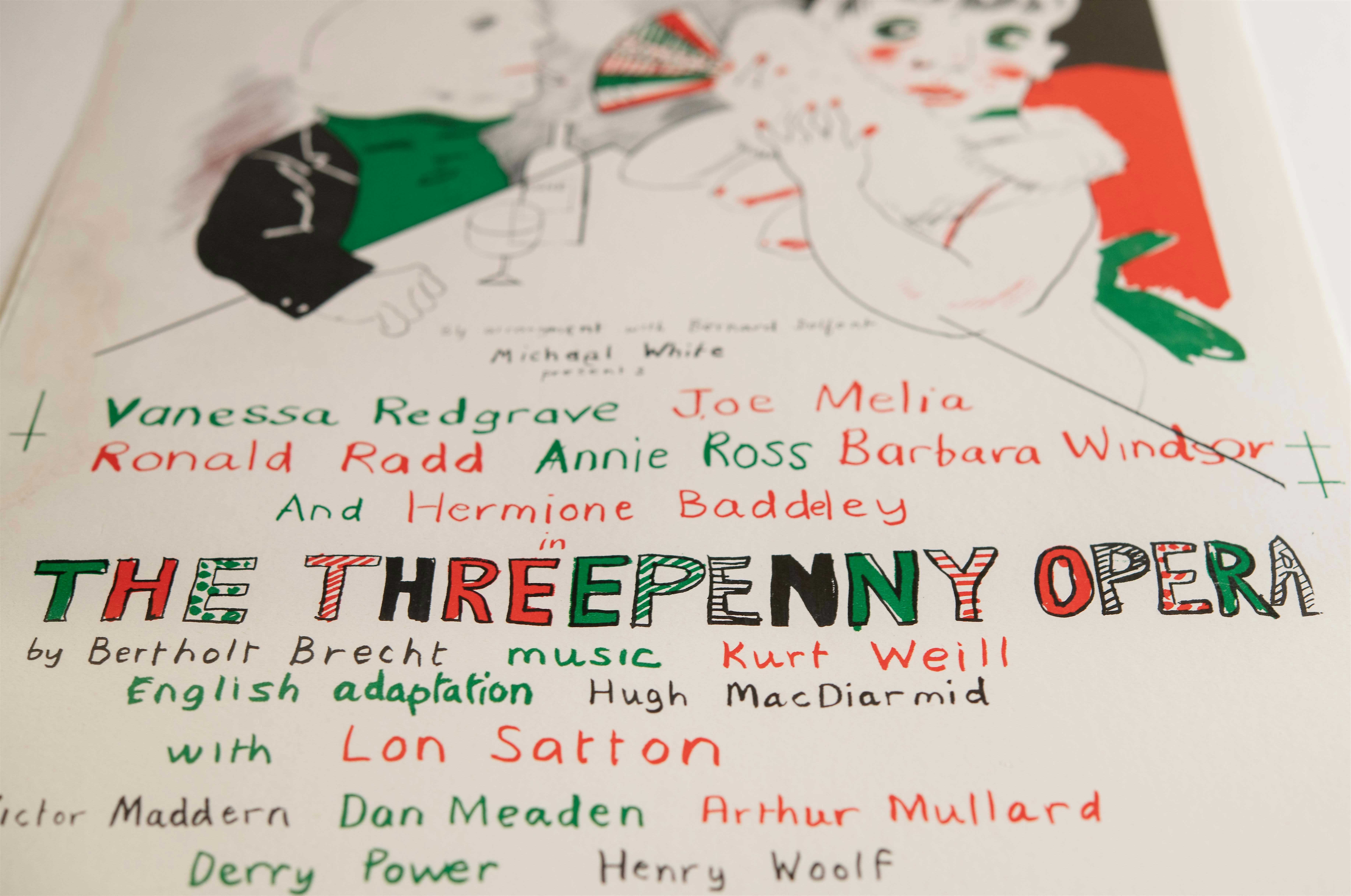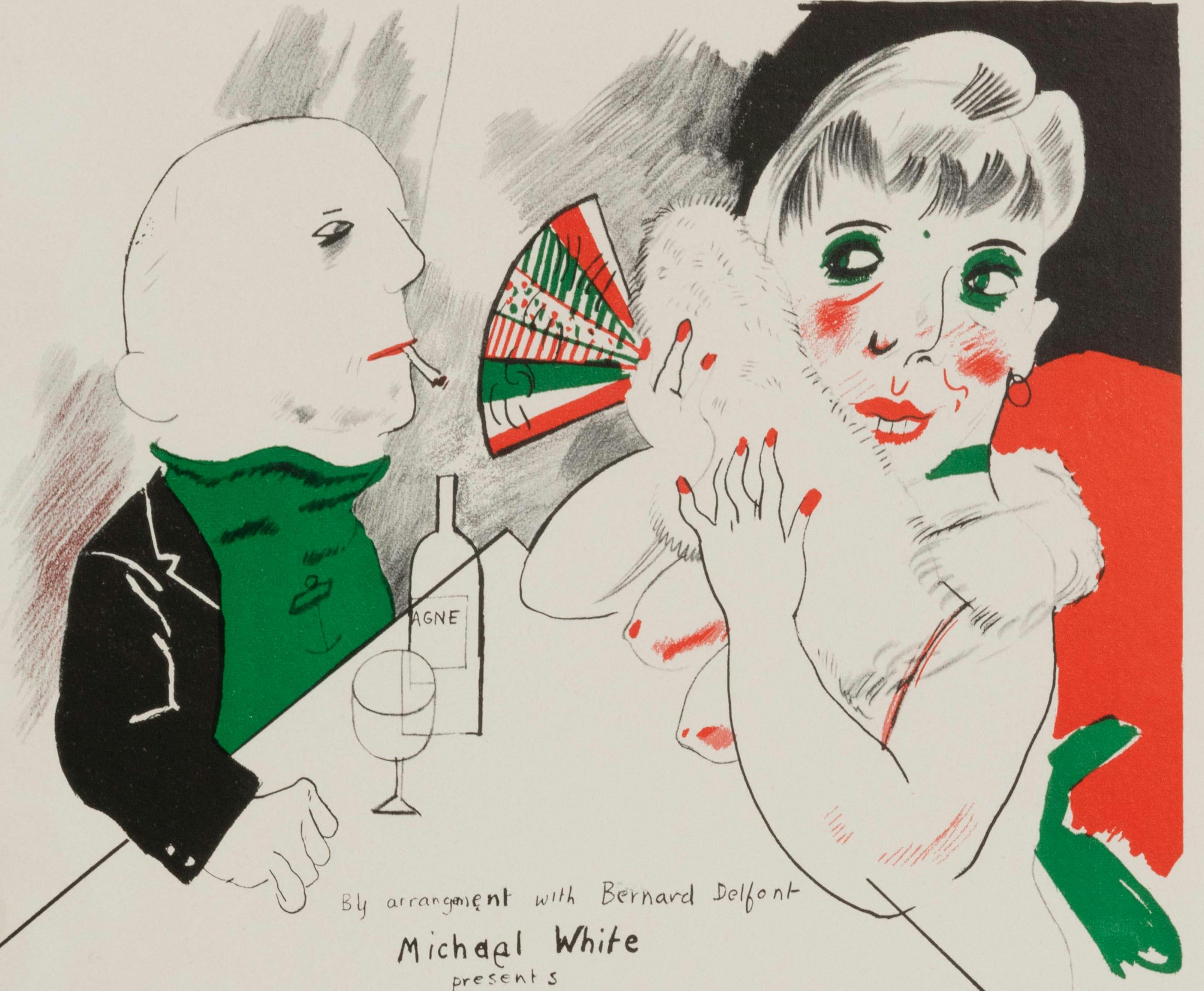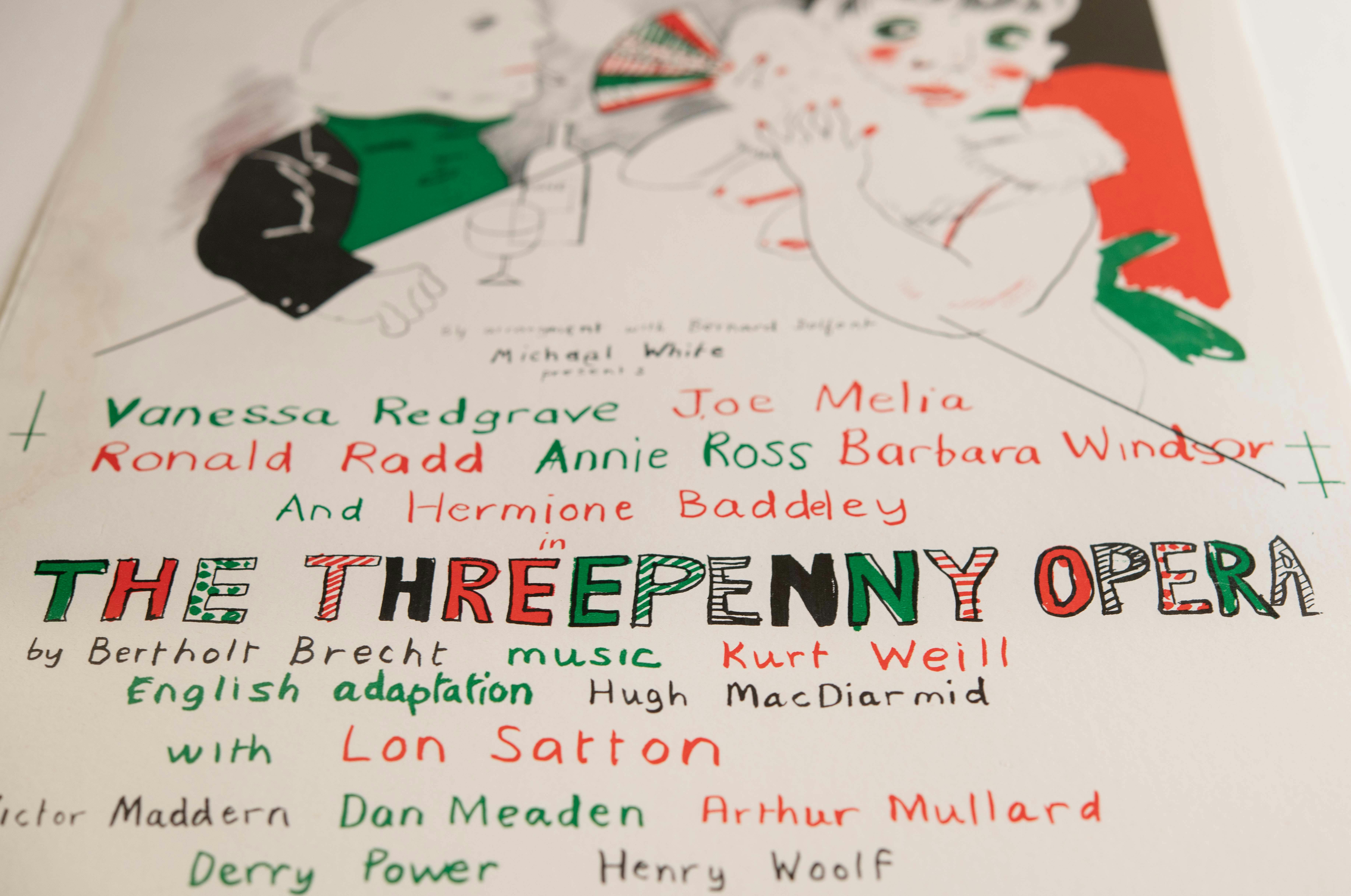Rare: David Hockney’s 1972 Threepenny Opera poster
Reading time: 2 mins
Though he is popularly known around the world for his pop art paintings of sun-drenched swimming pools, David Hockney’s theatre posters – bold, graphic, and deftly executed as they are – deserve the spotlight too.
Our collection houses his offset lithographic design for The Threepenny Opera, first staged at the Prince of Wales Theatre in 1972. We explore the Bradford-born artist’s relationship with theatre and what it was about the subversive play that attracted so many fanatical thesps.

Hockney’s long-standing love of theatre, narrative drama, and illusion goes back a long way. In 1966, he designed the revival of Alfred Jarry’s Ubo Roi for London’s Royal Court Theatre. In the 1970s, he also produced enormous set designs and costumes for operas – most notably Stravinsky’s production of the Rake’s Progress at Glyndebourne Opera House in Sussex.
When he was commissioned to design an advertisement for The Threepenny Opera, he was just 34. With wayward beggars, bandits, and brothel owners, the Opera’s cast must have made intriguing subjects for the young artist. A self-confessed free spirit, his art was never intended for an elite few. His art, in his words, was – and still is – for ‘ordinary people’. ‘Ultimately,’ he once remarked, ‘I’m about liberty, and I think you have to defend it.’
Originally written by John Gay in 1728 under the title ‘The Beggars Opera’, the play was translated into German by Elisabeth Hauptmann and her playwright lover Bertolt Brecht in the 1920s. As the product of post-WWI bohemian Berlin, it’s unsurprising that the creative couple chose to translate an opera that so brazenly critiqued the accepted customs of urban bourgeois society.
‘It’s the weightiest possible lowbrow opera for highbrows and the most full-blooded highbrow musical for lowbrows.’
Hans Keller, musician and writer

The Threepenny Opera was first performed in 1928 and, despite an initially poor reception, it became a great success, playing 400 times in the next two years. According to critic and musicologist Hans Keller, the work is ‘The weightiest possible lowbrow opera for highbrows and the most full-blooded highbrow musical for lowbrows.’ Such disparate receptions of The Threepenny Opera stoked fear in early audiences. Believing it glamourised criminality, some conservative magistrates tried to ban productions altogether.
By the time Tony Richardson’s production came to London in 1972, attitudes had softened. Reviewing it shortly after it first premiered at the Prince of Wales Theatre, R. B. Marriott extolled it for showing the ‘horrors’ brought about by both ‘the poor as well as by the rich’. Viewing all sections of society as devious and corrupt, Marriott resolved that the Opera had timely ‘depth and significance’ with many ‘notable performers’.
Hockney’s offset lithographic poster (above) depicts two of the play’s protagonists. The notorious villain Macheath (played by Joe Melia) rests a cigarette on his lip, and a champagne bottle with an accompanying glass is set before him. Such props engineered a sense of aspiration: the tools Macheath, nicknamed ‘Mack the knife’ needed to cement his middle-class status.
Across from him at the table, is Polly Peachum (played by Vanessa Redgrave). Coquettishly flashing a feather boa to hide her blushing face and crimson-shaded breasts, her character was markedly more naive in comparison to her gangster lover. Redgrave herself was praised by theatre-goers for her satirical wit and her ability to reveal the folly of her impressionable, young character.
‘This is the most fantastic theatrical part I’ve ever had. I don’t come on till the second half. It’s what I call a doddle.’
Dame Barbara Windsor

Using just three colours, Hockney reserved the rest of the poster for the play’s other co-stars (above), including ‘king of the beggars’, Peachum (Ronald Radd), Mrs Peachum (Hermione Baddeley), and the prostitute and former lover of Macheath Jenny (Annie Ross). Performing her rendition of the song ‘Pirate Jenny’ (since made famous by Nina Simone), Ross is said to have brought vital ‘poignancy and chilling passion’.
However, the most memorable performance came from the late Barbara Windsor who played Lucy Brown. When asked about her role in the play, Windsor told photographer Neil Libbert, ‘This is the most fantastic theatrical part I’ve ever had. I don’t come on till the second half. It’s what I call a doddle.’ Accordingly, reviewers celebrated her role for supplying genuine cockney raucousness.
Subscribe to our newsletter
Be the first to hear about our new collections, limited edition launches, and enjoy artist interviews.
By subscribing you agree to our privacy policy.
Contact us
01273 511 942
Mon-Fri, 9 am - 5 pm
All art prints and images on this website are copyright protected and belong to their respective owners. All rights reserved.
